Every traveler is concerned about their chances of seeing mountain gorillas while tracking them in the wild. There concerns are understandable especially when you consider the overall cost of gorilla trekking as an activity. According to the laws of nature, nothing is certain but when it comes to seeing the gorillas, the chances are very high. The high chances of finding the primates during a trek are a result of many factors which we will see later on.
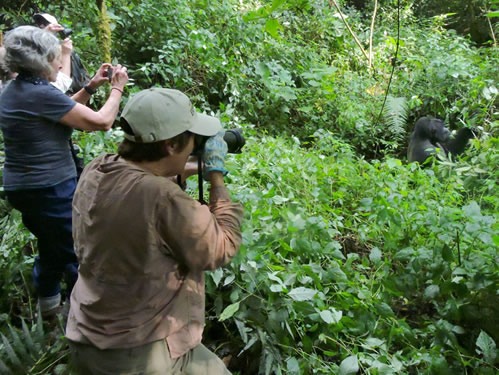 Mountain gorillas can only be found in Uganda, Rwanda and the Democratic Republic of Congo (DRC). These giant apes live in isolated areas of the Virunga massif and Bwindi impenetrable forest. Because of their sheer size, endangered status and the thrill of finding them, gorilla trekking is an incredible experience – an experience that one remembers for the rest of their life.
Mountain gorillas can only be found in Uganda, Rwanda and the Democratic Republic of Congo (DRC). These giant apes live in isolated areas of the Virunga massif and Bwindi impenetrable forest. Because of their sheer size, endangered status and the thrill of finding them, gorilla trekking is an incredible experience – an experience that one remembers for the rest of their life.
As mentioned earlier, mountain gorillas are found in only three countries. In Uganda, they can be seen in Bwindi impenetrable national park and Mgahinga Gorilla National Park. In Rwanda, the primates can be found in the Volcanoes national park. The mountain gorillas of the DRC live in Virunga national park. Uganda has 50% of the overall population of mountain gorillas.
Possibility of seeing gorillas in Rwanda, Congo and Uganda
The chances of seeing mountain gorillas is 98% in any of the 4 national parks. We cannot say 100% because of the rules/laws of nature. Every traveler must know that once they purchase a gorilla permit, they will see the primates. You can read more from an article about the best country for gorilla trekking.
Why are the chances of seeing gorillas so high?
Gorilla Habituation: This is the process of making wild gorillas familiar or accustomed to the presence of humans around them. By nature, gorillas are not used to the presence of human beings around them. In order to prepare them for visitors, a research team/trackers first identify a suitable wild 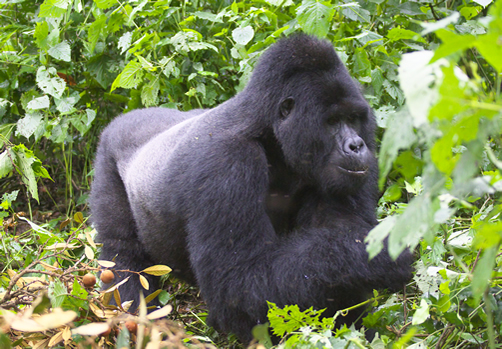 gorilla group. They then start studying their particular group behavior while also ensuring that they win their trust. You cannot win the trust of the group without starting with the dominant silverback as observed by Dian Fossey. Once the dominant silverback is comfortable with the presence of the researchers, other group members will follow his lead. The gorilla habituation process takes about 3 years to complete. Tourists are only taken to track habituated gorilla groups. Because of that, the group doesn’t flee into the dense forest or charge at tourists. This allows tourists to take photos and videos for one hour.
gorilla group. They then start studying their particular group behavior while also ensuring that they win their trust. You cannot win the trust of the group without starting with the dominant silverback as observed by Dian Fossey. Once the dominant silverback is comfortable with the presence of the researchers, other group members will follow his lead. The gorilla habituation process takes about 3 years to complete. Tourists are only taken to track habituated gorilla groups. Because of that, the group doesn’t flee into the dense forest or charge at tourists. This allows tourists to take photos and videos for one hour.
Advance Team of Trackers: Gorillas can be very mobile as they feed from one area of the forest to another. In the past, tourists would fail to find the group if they moved deep into the forests. The park 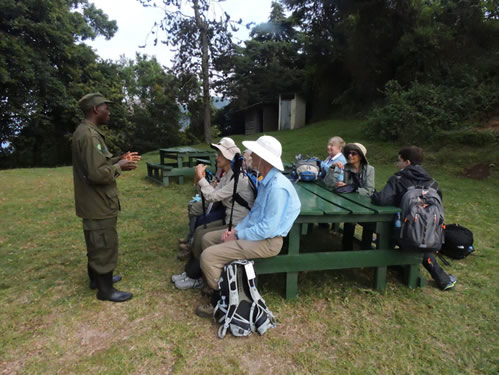 authorities realized that they could solve the problem by sending an advance team of trackers before daylight to find the exact location of the primates. This advance team know where the primates stayed for the night. They are expert animal trackers and can know where the primates are using signals (poop or abandoned nests). The advance team will guide the team leading tourists to where the primates are using radio calls or GPS tracking tools. These behind the scenes effort by advance tracking teams is what makes the chances of seeing mountain gorillas very high.
authorities realized that they could solve the problem by sending an advance team of trackers before daylight to find the exact location of the primates. This advance team know where the primates stayed for the night. They are expert animal trackers and can know where the primates are using signals (poop or abandoned nests). The advance team will guide the team leading tourists to where the primates are using radio calls or GPS tracking tools. These behind the scenes effort by advance tracking teams is what makes the chances of seeing mountain gorillas very high.
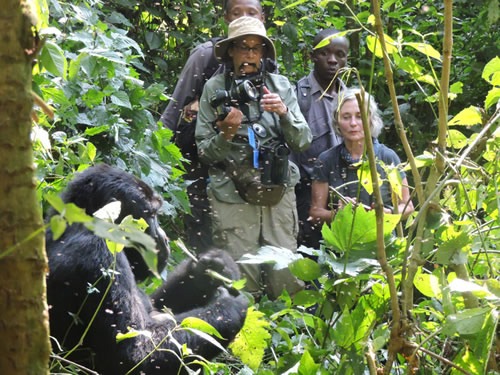 Allocation of Gorilla Groups: Gorilla families live in different parts of the forest. Some gorilla groups live in mountainous or heavily forested areas hence resulting in a more difficult trek. The allocation of gorilla groups is done in such a way that the fit travelers go after groups living far away from the park offices. The elders, those with health conditions or those who are found to be unfit are assigned gorilla groups living close to the starting point. The allocation of gorilla groups during the early morning briefing is therefore done in such a way that everyone is able to see the primates. Even those who cannot walk can see gorillas with the help of porters and Sedan chairs.
Allocation of Gorilla Groups: Gorilla families live in different parts of the forest. Some gorilla groups live in mountainous or heavily forested areas hence resulting in a more difficult trek. The allocation of gorilla groups is done in such a way that the fit travelers go after groups living far away from the park offices. The elders, those with health conditions or those who are found to be unfit are assigned gorilla groups living close to the starting point. The allocation of gorilla groups during the early morning briefing is therefore done in such a way that everyone is able to see the primates. Even those who cannot walk can see gorillas with the help of porters and Sedan chairs.
Cases and Situations where one doesn’t see gorillas
It is now almost impossible not to see the primates. Even if the assigned gorilla family wanders deep into the forest, the Park Rangers can simply take you to another known group closer to the park. That said, the activity can be cancelled if there is a natural disaster which the park management has no control of. You must be very unlucky for this to occur during your visit because gorilla trekking takes places each and every day of the year. The activity never stops even during public holidays or when it rains.
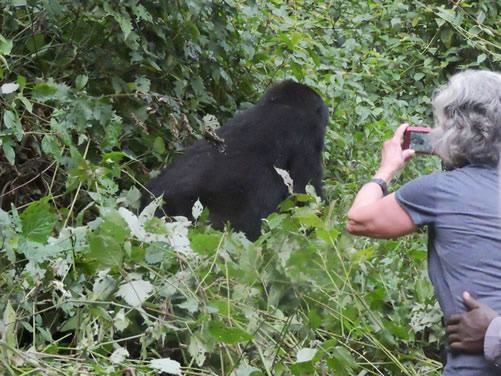 Note: The presence of militias/rebels in the gorilla can be a threat and may lead to cancellations of gorilla trekking in Virunga National Park. In the past, rebel groups found the dense forests in gorilla parks irresistible. They have been permanently flushed out in Uganda and Rwanda. The government of Congo and management of Virunga National Park have done a tremendous job of flushing out the rebels by deploying an army of rangers not seen anywhere else. They will never allow tourists inside the park if their scouts sight strangers near the park.
Note: The presence of militias/rebels in the gorilla can be a threat and may lead to cancellations of gorilla trekking in Virunga National Park. In the past, rebel groups found the dense forests in gorilla parks irresistible. They have been permanently flushed out in Uganda and Rwanda. The government of Congo and management of Virunga National Park have done a tremendous job of flushing out the rebels by deploying an army of rangers not seen anywhere else. They will never allow tourists inside the park if their scouts sight strangers near the park.
Note: Do not go for gorilla trekking if you have any infectious or airborne disease. Simple flue or cough can cause a whole gorilla group to get very sick or die. If the park authorities discover that you have flue or cough, they will request you to postpone the trek until you have treated the ailment. A reschedule of the activity is normally done free of charge but you will be inconvenienced – especially if you have to postpone your flight back home.
Note: The recent COVID-19 outbreak led to the temporary closure of all the national parks. After only 3 months of closure, the demand to see the primates was still as high as ever. The parks where opened although travelers have to follow new standard operating procedures for COVID-19 to protect the primates.


